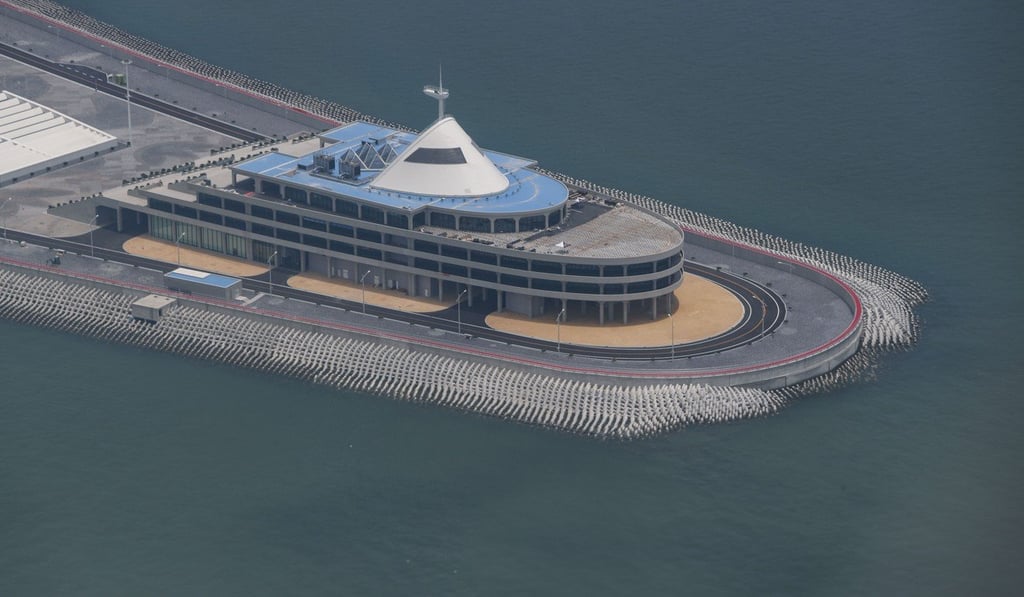Super Typhoon Mangkhut: engineer warns massive storm could put structural safety of Hong Kong-Zhuhai-Macau mega bridge to test
Whether bridge can withstand destructive force of storm depends on height of waves at artificial islands, structural engineer Ngai Hok-yan says

Predicted to be the most powerful storm since records began, with maximum sustained winds of up to 205km/h (127mph), the tropical cyclone is forecast to pass within 100km (62mph) of the city on Sunday morning.
Concerns had previously been raised over the structural safety of the city’s mega projects especially the bridge linking Hong Kong to Zhuhai and Macau as the main stretch was situated in the Pearl River Estuary’s Lingdingyang waters and prone to strong winds.
The 55km (34 mile) bridge, which is expected to open this year, reportedly has a design lifespan of 120 years and is built to resist wind speeds of up to 201km/h (125mph).
